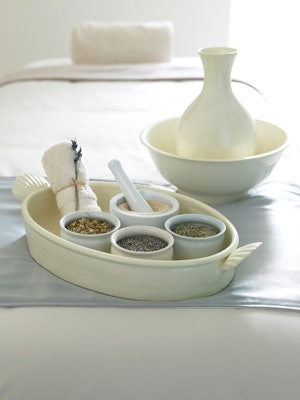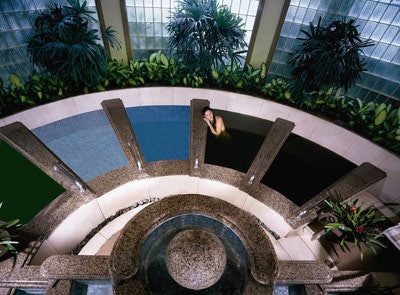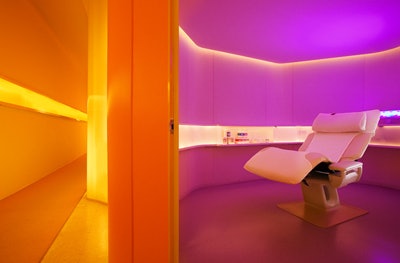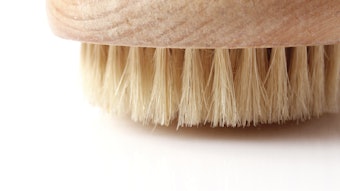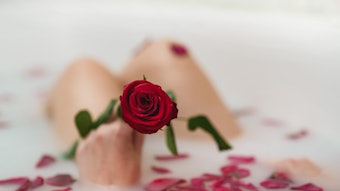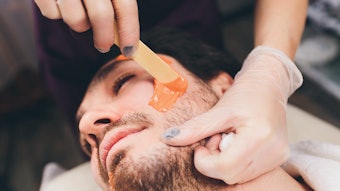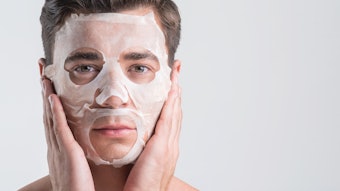Read the information that was on the cutting-room floor, offering valuable insights into body care trends, and browse through more images from the featured spas.
Lisa Hedley, Founder and Creative Director, Mayflower Inn & Spa
Sleep—we’ve always focused on it. We knew we wanted that. We’ve had programming all along and I’ve been looking on ways to enhance it. I think there are many more spas out there, and there are many more interested in creating long-term benefits from guests. People are looking for areas that are of interest to their guests. The research that has come out that is reaching a fevered pitch now suggests that many of the areas that people feel stress can be made better by sleeping better. We are chronic insomniacs. We are plugged into BlackBerries, electronic equipment, TV, and those things increase a series of bad habits that prevent people from sleeping well and for the amount that they need.
We are getting people to look at their lives and nutrition and habits and the way they stress during the day, and help teach them how to manage that so they start to wind down in the afternoon. If you’re going to drink coffee, do it in the morning and not past 2pm. That is true for a lot of things. If you are doing anxiety-based work, do it during the morning hours.
The way we approach sleep at the Mayflower is to take an integrative approach to people’s wellness. It is rare that someone’s weight problem or sleep problem is the result of one factor. One of the benefits of a destination spa is that it takes you out of the world and we strip down day-to-day stress and start to decompress people, then look at the variety of ways that we can help them relax and recognize how they build stress. It’s the level and the way you manage it that provides you with a balanced life.
We start with relaxation and stress relief. We then do a number of modalities: Thai stretch, yoga, meditation, contemplative practices, physical and mental. We do a workshop situation where we talk about strategies for better sleep. These are simple, such as, in the evening, turn down your world, turn down you lights in preparation for sleep; an hour before bed, turn off computers, TV, BlackBerries, get into your own inner world in a quiet way. Your bed is for sex and sleeping, not watching TV. We do some talking stuff to remind people of better ways and review some personal rituals.
A sleep expert leads this program that takes place four times a year. Three days are focused on nothing but that issue, and the program includes treatments and exercise that are focused specifically around sleep. We are constantly looking at new treatments Marketing: We e-mail blast current and former guests, we talk about it in the press. The piece that’s new is to have a resident expert.
Advice for smaller spas? Research the areas that interest you. Develop a philosophy about why people don’t sleep well and start putting the pieces together. A day spa could theoretically. It’s harder to have it at a day spa. People will find their way to things that will help them. They will find more and more benefits.
Kate Mearns, Spa Director, The Spa at Colonial Williamsburg
Being part of Colonial Williamsburg and the rich historial aspect here, it was only a natural fit to become the experts in the different wellness practices over the centuries. We worked with a consultant to help develop the concept of the continuum of wellness. What our spa could do here was to go back through the different centuries of American wellness practices. Each of our centuries depicts the wellness practices of that time. Our services brings that to a modern-day interpretation.
One trend is when a guest comes in, they want to do something authentic, unique; they know they want to try different services, they also want to stay in one room and have multiple services. Our 17th century is the first century that we had inspiration for. It’s a two-hour treatment; people are spending more time in services to increase benefits. This service depicts the early American-Indian practices, sweat lodges and hot stones—they put cool water on hot stones and sit in the areas with a dokter and detoxify and they would run to the river, jump in, do a cold plunge, they would do a bear oil with angelica and treat their skin. They may have been doing it for a variety of reasons, such as protection from the insects. Our service starts with a detoxifying wrap to take the person back to that time period with the detox process, and we have a cool aromatherapy towel that helps rinse and cool, and we complete the service with a hot stone massage. It’s one of my favorite services, it’s relaxing and uses a lot of the local herbs that were used in the time period, as well. The service blends culture, multiple services in one treatment and indigenous products.
We have tourists and a local base. We are part of a large resort with four different hotels. We have a strong local clientele, as well. They really enjoy the century services. It’s different, something they can enjoy and go home at talk about.
We offer the five signature century services, but we also offer traditional spa therapies and services. What kind of spa guest looks for these treatments: It appeals to newer and savvy spa guests because they are so different.
It’s important to market regardless. This is our first full year, and we do market and talk about the different signature services in our marketing. I think when people come here, it fits so well with our environment and our community. It’s very peaceful and relaxing, it’s synergy. It doesn’t feel out of place at all. We do a blend of marketing, we’ll do e-mail, Web site, advertisements, we have a strong marketing department here. A lot of it is word of mouth. We had a guest call the other day just as an example, saying “I have to have the 18th century.”
My advice to smaller spas: Do some research, and really understand about the culture and indigenous-type products. If it was an existing spa, I would sample it and get ideas from current spa guests to get a consumer perspective on it. The only other advice would be you’ve got to make sure that it’s real, not hokey; it has to be authentic, something they can believe in and see the benefits of, as well. There’s got to be some benefit to the service.
Nicolas Ronco, Founder, Yelo
The hecticness of our lives has really increased in the past 15 years; fax, BlackBerries, Internet, wifi; we are reachable everywhere. That’s really stressing people out. A lot of employees are wanting to be paid overtime for using BlackBerries above and beyond business hours. There’s no good excuse anymore. That is the first reason people are losing sleep.
The second thing is that there are a number of studies confirming the importance of sleep. They are showing there are major issues including weight problems, depression and heart problems that lead back to sleep. The Harvard School released a study in February of 2007 saying a nap three times a week is reducing the risk of heart attacks by 37% for those about 60.
On 60 Minutes recently, there was a report that took a healthy 25-year-old college guy, and they disturbed his sleep for a week. The guy started developing type-2 diabetes, and he gained five pounds. These two trends are making people aware that this is no joke, and it is as necessary as anything else. If you don’t sleep for two months, you will die. It’s not a matter of luxury anymore; it’s becoming a matter of public health.
Sleep was the initial concept from the February 2007 openeing. I was a regular corporate guy, I worked for TimeWarner for years. With my job, I had to travel a lot. I experienced the negative effects of jet lag. I was gaining weight, getting sick, my immune system was affected, I knew I was sluggish all the time. In 2002 and 2003, I realized that Japanese and Korean citizens take sleep seriously, and they have break rooms in companies. I thought that they knew something that we didn’t. Instead of trying to get sleep, we go to Starbucks or we have a glass of wine before bed. Caffeine doesn’t give a boost and stays in system and prevents sleep at night and screws with our overall rhythm. That’s when I decided to create Yelo. We have 60% female visitors, 40% men, which is much higher than a normal spa. We have people between the ages of 25-55. We have a lot of corporate people because we signed corporate deals with TimeWarner, BMI, Newsweek and First magazine.
We’re a wellness venture; I didn’t want to be called a spa because that means health with water. We don’t use water with our treatments. The other issue is that everyone these days is calling themselves a spa. It’s very confusing. I’m doing something completely different. I’m providing wellness. We do reflexology, massages, detox treatments, and people take napping with one of these.
They would say they want a 30-minute nap. Their first visit, we would ask medical questions, sleep patterns; and how they feel: sluggish, stressed, cranky. Once we know this, we have them select a scent of orange flower, fig, mimosa or blackberry, and they select music or a sound: whales, nature, storms, Chopin, Mozart, and others. Once they create their nap, we install them in the cabin and in our zero-gravity chai,r and we turn off the lights and they fall asleep very quickly. The chair puts their knees above their heart, which helps them fall asleep quickly. We don’t use sound to wake them, we simulate the sunrise in the cabin with LED lighting and, in three minutes, people come back to the surface, open their eyes and they leave.
We recommend a 40-minute for first time and a 20-minute nap after that. They feel like they’ve taken a three week vacation because before, they are stressed, cranky, their eyes hurt, and when they leave, they feel lighter, in a good mood. They say “I’m feeling it in my body,” “I’m back in my shoes, instead of feeling horrible.” It’s also good for the companies they are working for.
Corporate contacts are really important. Our cabins are transportable. We are going to install them in airports, companies and malls. We advertise in some magazines and we get a lot of press.
The nap starts at $15 for 20 minute nap and the highest price is 40 minutes for $28. The 20/20 is 20 minutes of massage followed by 20 minutes of nap for $65. Nap Plus is for people who think they won’t be able to fall asleep, and includes 10 minutes of shoulder and ear massage with a 20-minute nap, and it costs $40.
Cecilia Hercik, Director of Spa and Sales Operations, The Spa Grande, Grand Wailea Resort Hotel & Spa
I think, especially in exotic locations, people have high expectations of finding something unique and linked to the culture. They are a little more adventurous, and want to learn and experience a little bit of the culture. Hawaii is amazing because the culture is so alive. When we created the journey, we wanted to make sure that it wasn’t just ingredients, but it had more substance. This company that lives in the mountains and they have a garden with all these herbs and they infuse their products with a lunar and stone infusions. They use stone containers and wait for the full moon and do some blessings. We launched one treatment with them … something that is very unique. Pau’lau.
We took the name, because it is a journey when you are with us and you know you still create this treatment for a market that doesn’t want to get too involved with religion or anything too out there. We wanted to make sure we don’t scare anyone. We’re creating an experience. Learning about the properties of the products and the organic and culturing of the product.
When we created it, we wanted it to use the whole body. We used a lomi lomi traditional massage techniques. It’s almost like a hula dance in movements, flow, pressure and the oils that get selected. They have ginger, chili peppers, lemongrass, peppermint; we have three different oils, one is for women who are experiencing menopausal concerns. The other is body, mind and soul; it’s fruity, but sweet smelling with flowers, and the last one is very herby and balancing. So once we select the right oil for you, the massage is a 50-minute treatment. Then we put an herbal-infusion cream on the scalp, coconut, kukui oil, rosemary, put a hot towel to keep the heat and then we move to your feet and use a food cream with turmeric, ginger, vitamin E, coconut and sesame oil, so we massage the feet with hot lava stones.
The service lasts around 80 minutes, and it has been a favorite since we launched it because it is a body treatment and a massage. We’ve been seeing the trend that people feel more comfortable with the massage.
Smaller spas need to find the right person to support what they are trying to do. You have to be careful not to offend a culture that is alive. Reach out for someone who lives the way the culture dictates and that way they can tell you the dos and don’ts. Sometimes you have to have permission. Then you can launch authentic, it should be authentic; I don’t like claims that it’s Hawaiian just because it has papaya. The treatment is trained here, the products are made here in Hawaii and made with an intent. Our massage therapists love it and they enjoy the training, and it’s not to sell, it’s trying to get the guest to experience a whole journey.
Jean Kolb, Spa Director, Kohler Waters Spa
Cold is becoming a trend again. When you first look at the principles of spa and water therapy, the use of hot and cold go back hundreds of years. People understood the benefits of warming and cooling the body. It really does have amazing benefits. We say that our water treatments are not for the first-time spa goer. They incorporate warm and cool water. The women have the whirlpool and the cool plunge at 65 degrees F. The men’s is eight-foot deep. Women like to dip their toe in it and the men like to take the plunge. People come out of it and they feel exhilarated and totally relaxed. A lot of people take a nap because it gets your whole circulatory system going, and when the blood pumps through your body, it helps your muscles to relax. We tell clients to do cold plunge and warm before treatments so they will be more relaxed. You have people from Europeans who, in the middle of winter, they are in this hot whirlpool and they go outside and rub snow on the bodies and then get back into the whirlpool. We try to incorporate that in water treatments and in pedicure treatments with cold seaweed mud.
I see cold coming back. The trend with the use of warm must compliment the cold. You can’t have 100% cold because it defeats the purpose because your muscles constrict in the cold. That’s what happens with the cold, so you want to have the warmth. Water therapies in general are trends because that is the foundation for a spa equipment. The hot/cold modality is becoming very popular. Our spa guests are ready to take it to the next level. Massages are a regular wellness routine, and they are looking for something new and exciting.
For us, because we are Kohler Waters Spa, we market our water treatments, but, for us, it’s a way of life. It’s something that we do because we know it is therapeutic to the body. Any time you can tell the consumer about the therapeutic benefits of a treatment, it’s good. Our customer is more spa savvy and they want to know that they feel good afterward and that they’ve done something good for the body.
Small spas should take the plunge. Just try it. We have a menu development team. Any therapist can be on this team who wants to be creative. Let them go … experiment with it. Try it on the entire body, through hair, feet, whatever, just go with it, play with it. You’ll find that you come up with some of the most amazing treatments.
Jennifer Lynn, Spa Director, Qua Baths & Spa, Caesers Palace
Our core philosophy centered around Roman bathing rituals of the past, and part of those are the contrasting treatments room. The Tepidarium is body temperature, the Calidrium is 106 degrees F and the Frigiderium, the cold plunge pool. The concept of the cold is to shock the nervous system and promote a deeper state of relaxation for your muscles. Athletes soak in cold tubs. The Arctic Ice Room, goes back at the contrasting temperatures.
The atmosphere is really great. It snows … and that’s more for the effect. We have an ice fountain which is shaved ice that can be used to cool and exfoliate skin. By ending cold, you’re bringing your core temperature down,and you can restart circuit for more detoxification. It closes pores and stops perspiration.
We saw it as a core philosophy to taking the waters and tapping into the Roman bathing rituals.
Clients love it. It snows everyday in Vegas. I know I like to go and get as much as I can out of it. After the sauna, I need some place to rest, and you’re in a robe and still sweating and trying to get your core temperature back down. If I’m doing the heat treatments, and I get a shower, I’m still hot. Because it’s part of our core philosophy, in all of our literature and on our Web site. It’s garnered a lot of press. We were kind of in the forefront. It’s been a great marketing tool. The men love it too because men love to go into the cold and bring their temperature down.
